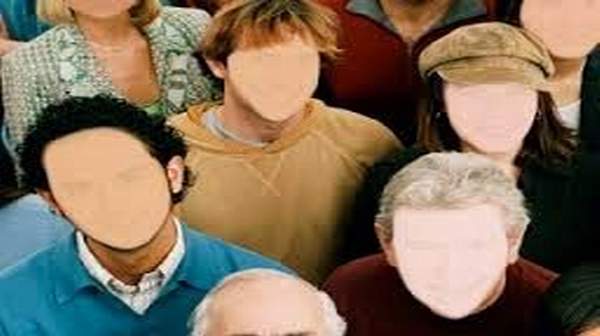Prosopagnosia is a neurological disorder characterized by the inability to recognize persons faces. Prosopagnosia is also known as face blindness or facial agnosia.
The term prosopagnosia is from the Greek words for “face” and “lack of knowledge.” Depends on the degree of impairment, some people with a prosopagnosia may only have difficulty recognizing a familiar face; others will be unable to discriminate between unknown faces, while others may still not be able to distinguish a face as being different from an object.
Some people with the disorder are not able to recognize their own face.
Prosopagnosia is not related to a impaired vision, memory dysfunction, loss of memory, or learning disabilities.
Prosopagnosia is known to be the result of abnormalities, damage, or an impairment in the right fusiform gyrus, a fold in the brain that appear to coordinate the neural systems that control facial recognition and memory.
Prosopagnosia can result from stroke, traumatic brain injury, or a certain neurodegenerative diseases.
In some cases, it’s a congenital disorder, that present at birth in the absence of any brain damage. Congenital prosopagnosia appears to run in the families, which makes it likely to be the result of a genetic mutation or deletion. Some degree of prosopagnosia often presents in children with autism and Asperger’s syndrome, and can be the cause of their impaired social development.
How does prosopagnosia can affect a person’s life?
Some prosopagnosics cope well with the face recognition impairment, and develops an elaborate compensatory mechanisms to help them function effectively in everyday life.
For others, however, this condition has a much greater impact on daily functioning. Some prosopagnosics have reported an avoidance of social interactions, problems with an interpersonal relationships, damage in career, and even depression.
For extreme cases, prosopagnosics may develop social anxiety disorder, characterized by fear and an avoidance of social situations that may cause embarrassment.
Prosopagnosia may be linked to autistic spectrum disorders, is it true?
It is true that many people with autistic spectrum disorders also suffer from impairments on face recognition. Problems with face processing have also been reported in other developmental disorders such as Williams’ syndrome and Turner’s syndrome.
There are various theories that concerned with this pattern of presentation, and some researchers believe that the face recognition impairment can be attributed to a lack of social interests, and others that perceptual-processing strategy or impaired visuo-spatial skills may be the critical factor.
However, while some people with prosopagnosia report severe social consequences resulting from the face processing impairment, these are not necessarily indicates of a concurrent neuro-developmental disorder.
On the contrary, there are reports of a misdiagnosis of high-functioning autism when the underlying impairment is actually prosopagnosia. Importantly, many developmental prosopagnosics do not fulfil the diagnostic criteria of an autistic spectrum disorder.
Are there any techniques that I can use to get round my difficulty with faces?
Many people with prosopagnosia report compensatory strategies that can often help them circumvent their difficulties.
For instance, teachers have described on how they use classroom seating plans to identify their pupils, or even recognize different children by an external cue, such as their backpacks.
Other elaborates compensatory strategies have been described, such as the use of jewelry, clothing, voice or gait to recognize a familiar person.
Of course these strategies don’t always work, and particularly break down when a person is met out of context and logic cannot be combined with these external cues.
Causes
The neurological basis for prosopagnosia is not well understood. One theory is that it’s the result of damage, abnormalities, or impairment in the right fusiform gyrus of the brain. It is thought that this part of the brain coordinates the neural systems that control memory and facial perception.
Research has shown that the brain processes images of faces differently than other kinds of objects. There’s some disagreement in the scientific literature about whether prosopagnosia is a general disorder of recognition or a face-specific problem.
It may be that there are different types of prosopagnosia that have other symptoms in addition to difficulty with face recognition.
Treatment
Individuals with prosopagnosia must learn other ways of remembering faces. Clues like hair, voice, and clothes may help to identify people. An awkwardness in social situations due to prosopagnosia may cause a person to become shy and withdrawn.
Many individuals with this disorder report difficulty watching movies and television shows since they cannot identify the characters from one scene to the next.
Researchers are working on ways to help individuals with prosopagnosia improve their face recognition.
Are there any techniques that I can use to get round my difficulty with faces?
Many people with prosopagnosia report compensatory strategies that can often help them circumvent their difficulties.
For instance, teachers have described on how they use classroom seating plans to identify their pupils, or even recognize different children by an external cue, such as their backpacks.
Other elaborates compensatory strategies have been described, such as the use of jewelry, clothing, voice or gait to recognize a familiar person.
Of course these strategies don’t always work, and particularly break down when a person is met out of context and logic cannot be combined with these external cues.





